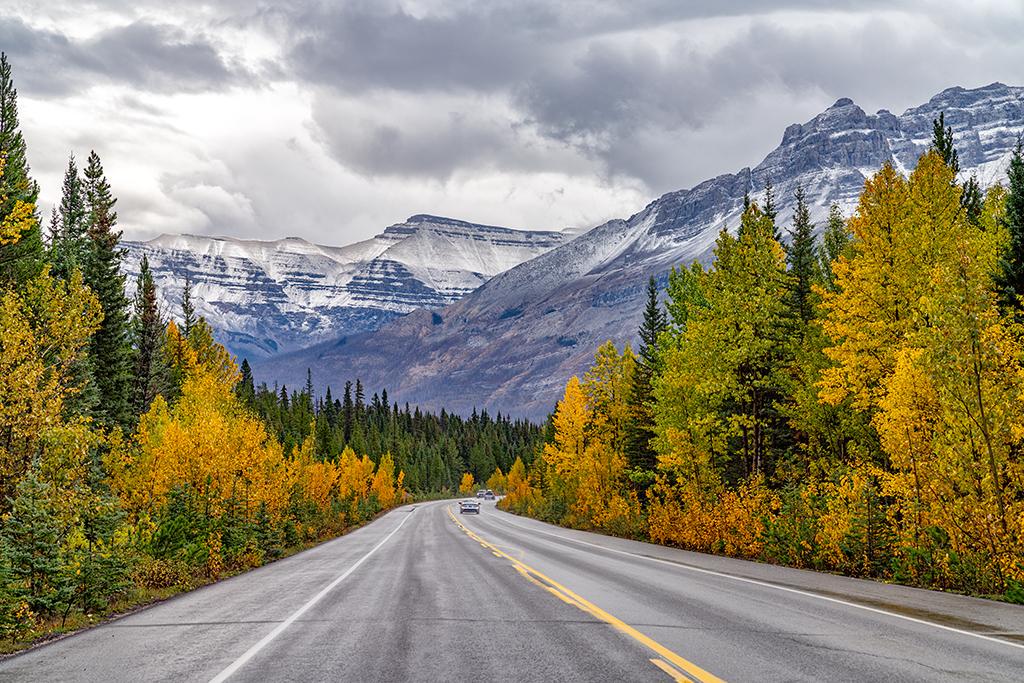
Heading into the Canadian Rockies via Icefields Parkway through Banff National Park / Rebecca Latson
This past September, I embarked upon a nine-day, 2,000-mile “Last Photo Hurrah For 2023 Road Trip” into the Canadian Rockies to photograph within four national parks: Kootenay, Yoho, Banff, and Jasper. I encountered a mixed bag of weather along with a few other surprises, and expectations sometimes clashed with reality. Nonetheless, my “last hurrah” was still amazing and I returned with great images plus tips for you to apply to your own photography should you choose to road trip into western Canada’s mountainous national parks (or any national park, for that matter).
Road Tripping
The last time I took a multi-park road trip was in 2018, when I moved from Texas to Washington state. Covering 2,917 miles in three weeks, I visited six different units of the National Park System. I’d had four-to-five months to map my route, pack, make lodging reservations, and figure out what I wanted to do along the way.
This nine-day, 2,000-mile Canadian road trip, on the other hand, was totally mapped and planned in about a month. When all was said and done, this Canada trip covered about two-thirds the distance of my 2018 trip in a little over a week and I learned a few things along the way which might help you with your own road trip. So, before going into the photo details, here’s some helpful road tripping advice, maybe most of which you already know.
- As your departure date nears, keep checking those 10- and 14-day weather forecasts. Not only will this aid in your choice of clothing to pack, but those daily forecasts are also beneficial for choosing which day you might wish to reserve a ticket for a tram ride up a mountain, a boat cruise on a mountain lake, or some other outdoor event.
- When deciding on lodging, be it camping or brick-and-mortar, take a moment for a quick internet search to find out if any other event is occurring during your stay in that area. My Radium Hot Springs sojourn at the southern border of Kootenay National Park coincided with the Columbia Valley Classics Show And Shine car show, which meant I listened to “muscle cars” loudly (really loudly) revving their engines and screeching their tires from early morning until almost midnight during each of my two-nights’ stay.
- Find out about any major construction projects along your route which might create road closures or unforeseen detours. Luckily for me, road closure along the Kicking Horse Canyon portion of the Trans-Canada Highway (aka Hwy 1) near Golden, B.C. did not coincide with my travel days into Yoho National Park.
- Carry bear spray. There was a recent article about a bear attack in Banff National Park resulting in two fatalities.
- A vehicle breakdown during a road trip is a total bummer. Get your vehicle checked, the tires rotated, oil changed, etc. Your car/truck/SUV is going to take you many places along that road trip and it may also serve as your “tent,” on occasion.
- If it’s tick season (and it usually is), spray your clothing with Permethrin to prevent any possibility of a tick hitching a ride and repaying you with one of several nasty illnesses: Lyme disease, babesiosis, ehrlichiosis, Rocky Mountain Spotted Fever, anaplasmosis, Southern Tick-Associated Rash Illness, Tick-Borne Relapsing Fever, and tularemia.
- Pack several filled water jugs for your trip. They are good for general use, roadside emergencies, and campsites with no potable water.
- Pack raingear for yourself and for your cameras. Online sites like BHphoto and Adorama carry a plethora of camera rain cover brands (Ruggle, Vortex Media, Think Tank, Op/Tech, Lenscoat).
- Pack plenty of spare batteries and memory cards for your cameras and a charger for your smartphone and smartwatch, because you may not be anywhere close to an electric outlet when you need it (Canadian outlets fit U.S. plugs, btw).
- If your road trip is into Canada, order your Canada park passes online. It’s easier than having to wait in line to purchase a pass. You can buy separate passes for each park or pay $80 (usd) for an annual pass, just like the America the Beautiful annual park pass here in the U.S.
Road Trip Expectations Vs. Reality
Back in 2016, I took a short April trip to Banff and Jasper national parks. Springtime in the Canadian Rockies is still sort of “wintery” in the Great White North. During that 2016 visit, I encountered few crowds and fewer cars on the roads, probably because of the weather and the fact most popular trails were buried beneath a blanket of thick snow. Also, lodging outside of populated areas like Banff or Jasper was still closed for the season, which left little choice for any spring visitors.
Now fast forward to September 2023.
I assumed it would be similarly quiet with rainy weather instead of snow, and more lodging options. School should have started so there wouldn’t be many families in the parks. I did not consider the huge crowds of retirees, people between the ages of 20 – 30, international travelers on organized tours (French, German, Aussies, Asians), the number of post-Covid pandemic crowds still eager to experience fresh air and nature, and commercial semi-trucks lumbering (or speeding) on park roads serving as main conduits west to east and vice versa during September.
I also assumed I’d find plenty of places to stay for the night, not realizing the popularity of early autumn in the Canadian Rockies. Available brick-and-mortar lodging was sparce and quite expensive, even with the exchange rate favoring the U.S. dollar. Cheaper rates could be found 50 – 90 km (31 – 56 miles) out of my way. Campgrounds were either closed for the season or almost full. I managed to work it all out, but this is something for you to think about so you won’t be assuming, like I did.
Photography In The Parks
Now for the photography part of the road trip. Even on overcast days, the landscape provided photo ops everywhere you looked. In all honesty, it’s difficult to take a bad picture in any of these national parks. I also saw quite a bit of wildlife (bear, elk, moose, grouse) – usually when I was on the road with nowhere to stop and when I did finally stop, the wildlife had ambled back into the forest.
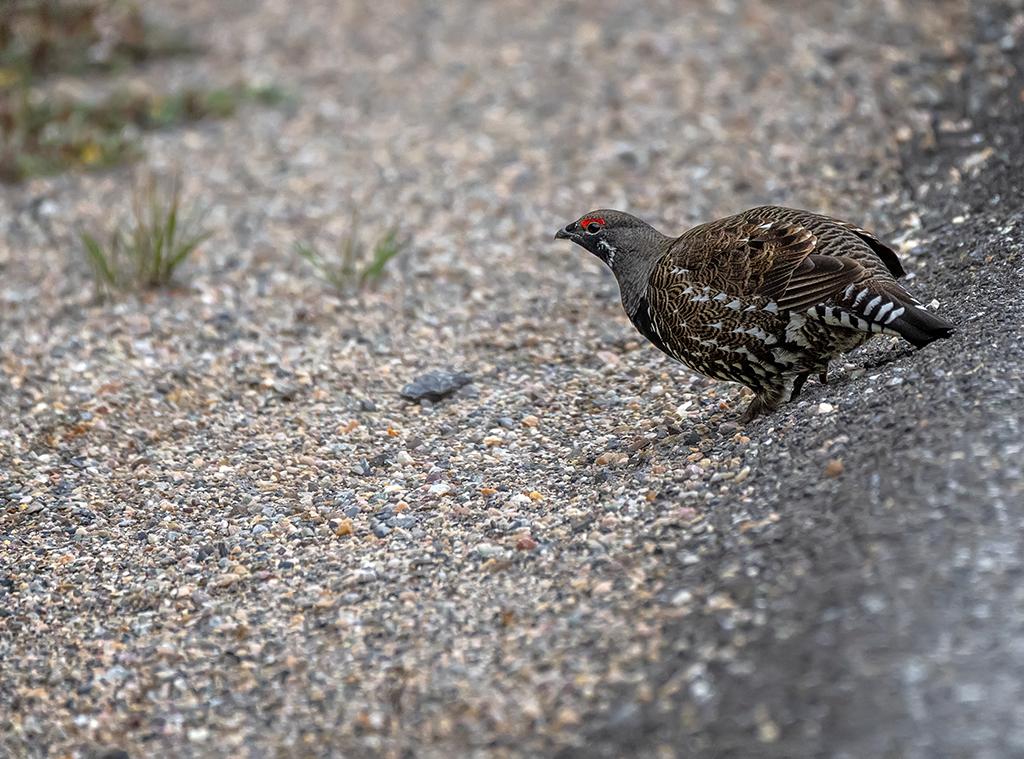
Spruce grouse (?) along the roadside, Banff National Park / Rebecca Latson
During your road trip, get a leading line shot or two of the road and beautiful scenery around that asphalt strip. Just watch out for those cars. Safety first.
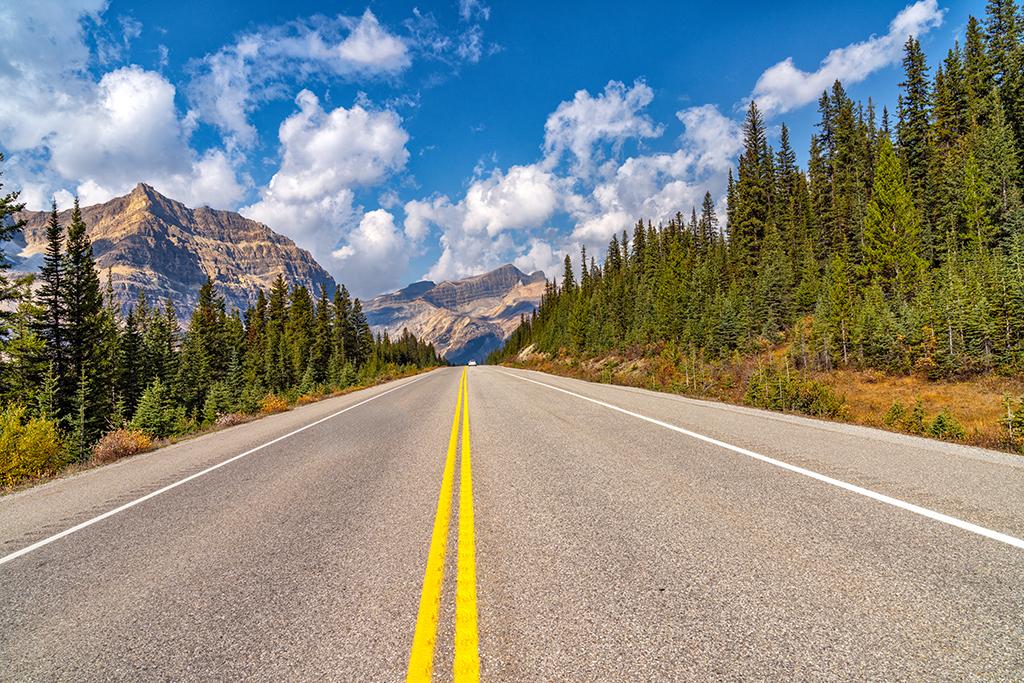
A leading line straight toward the mountains of Canada, Banff National Park / Rebecca Latson
Most of the photo articles I’ve written for the Traveler include a sentence or two advising you to capture shots of your favorite park spots during different seasons, times of day, and under different weather conditions. An image can look markedly different under any or all those circumstances. I made it a point to try and revisit some spots I’d photographed in 2016, and you can see below the differences.
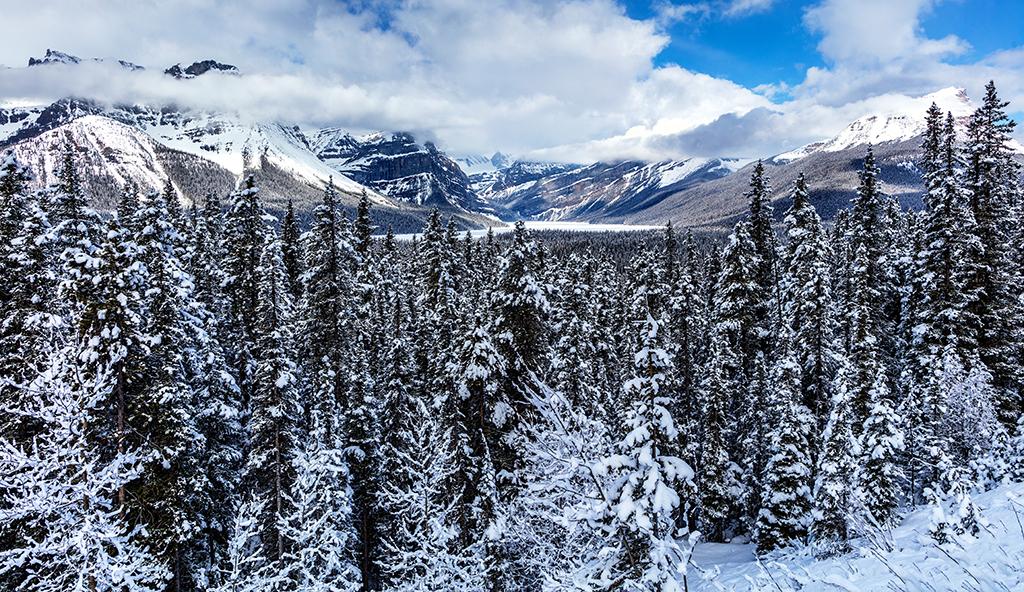
Icefields Parkway April vista, Banff National Park / Rebecca Latson
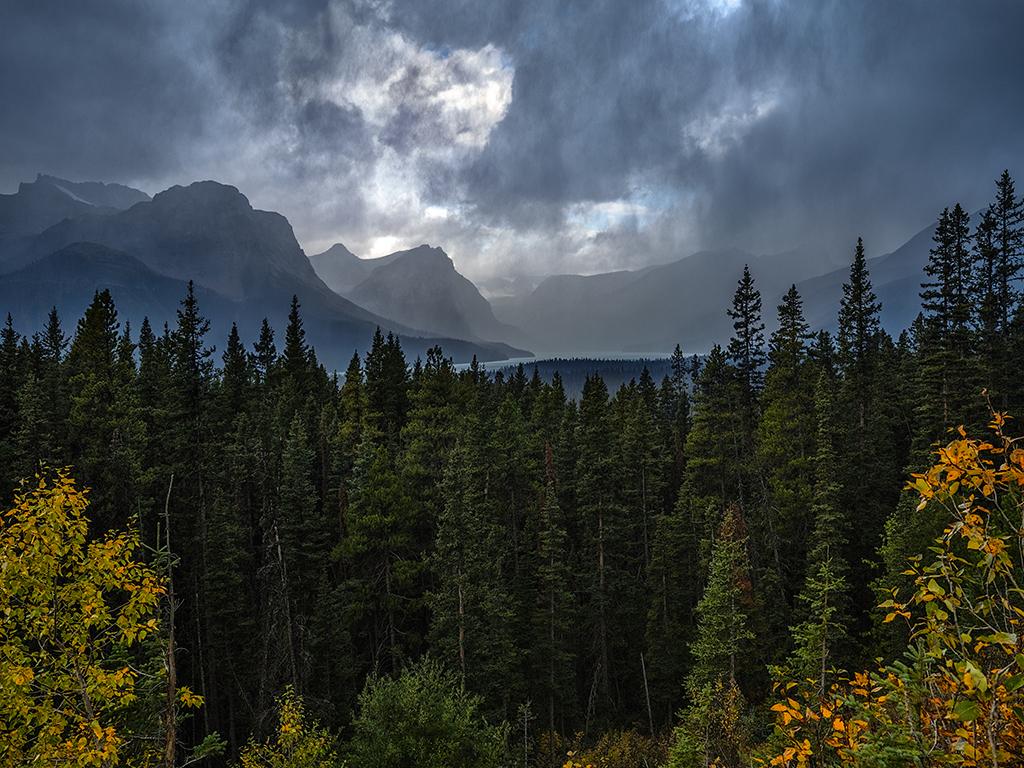
Icefields Parkway September vista, Banff National Park / Rebecca Latson

Saskatchewan River April vista, Banff National Park / Rebecca Latson

Saskatchewan River September vista, Banff National Park / Rebecca Latson
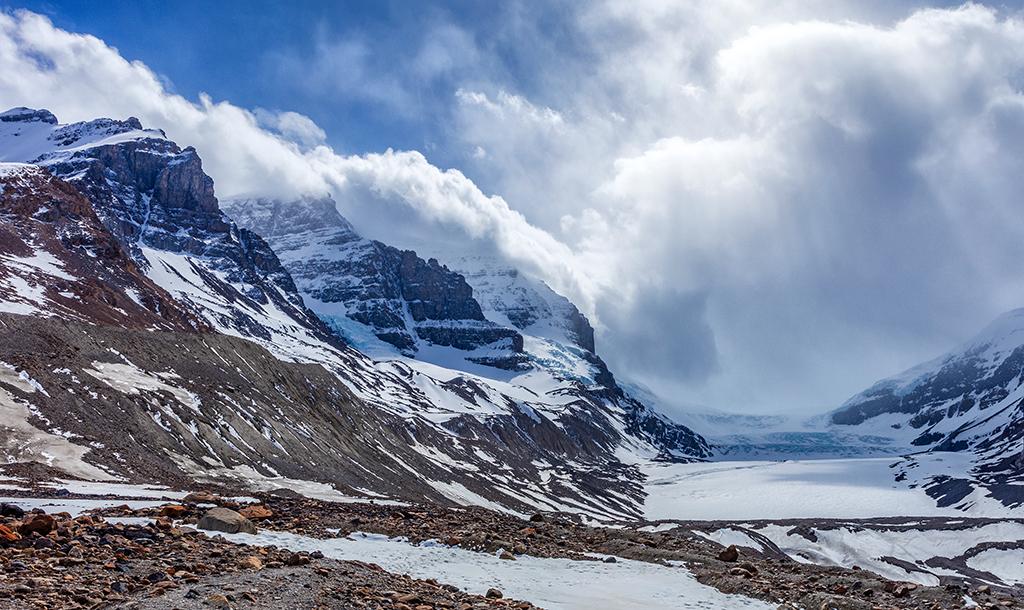
An April 2016 view of Athabasca Glacier scenery, Jasper National Park / Rebecca Latson
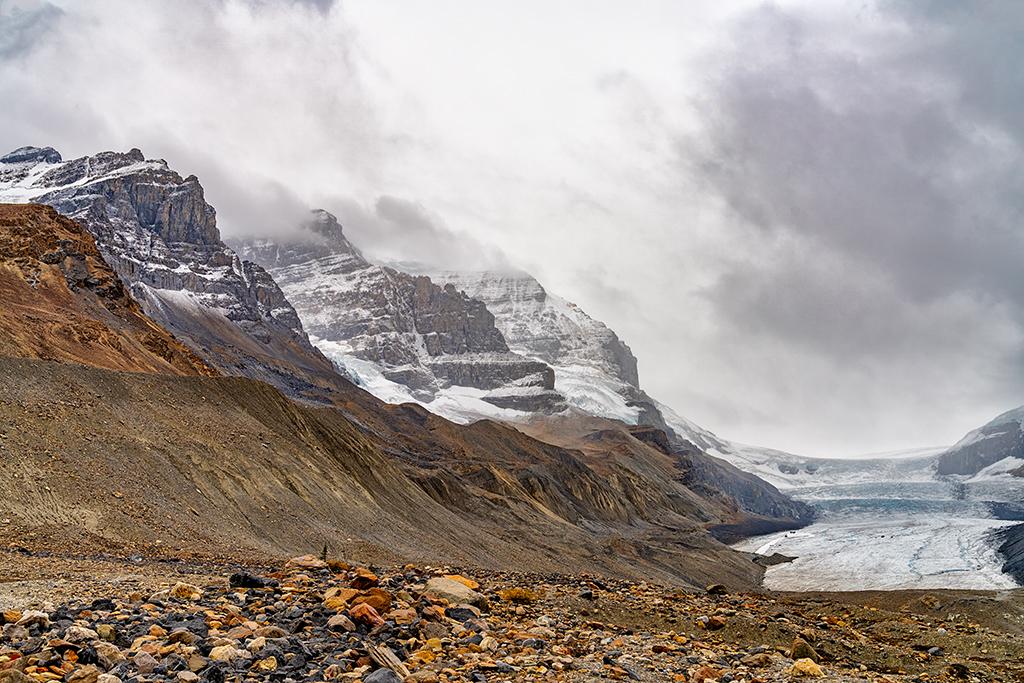
A September 2023 view of Athabasca Glacier scenery, Jasper National Park / Rebecca Latson
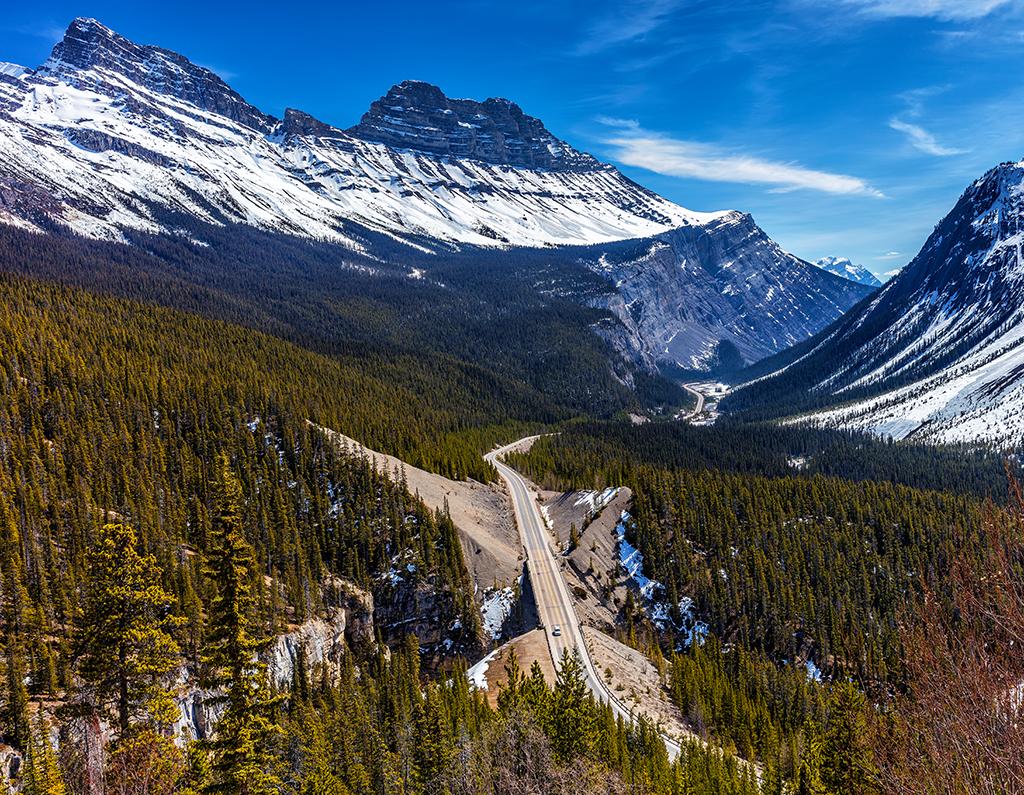
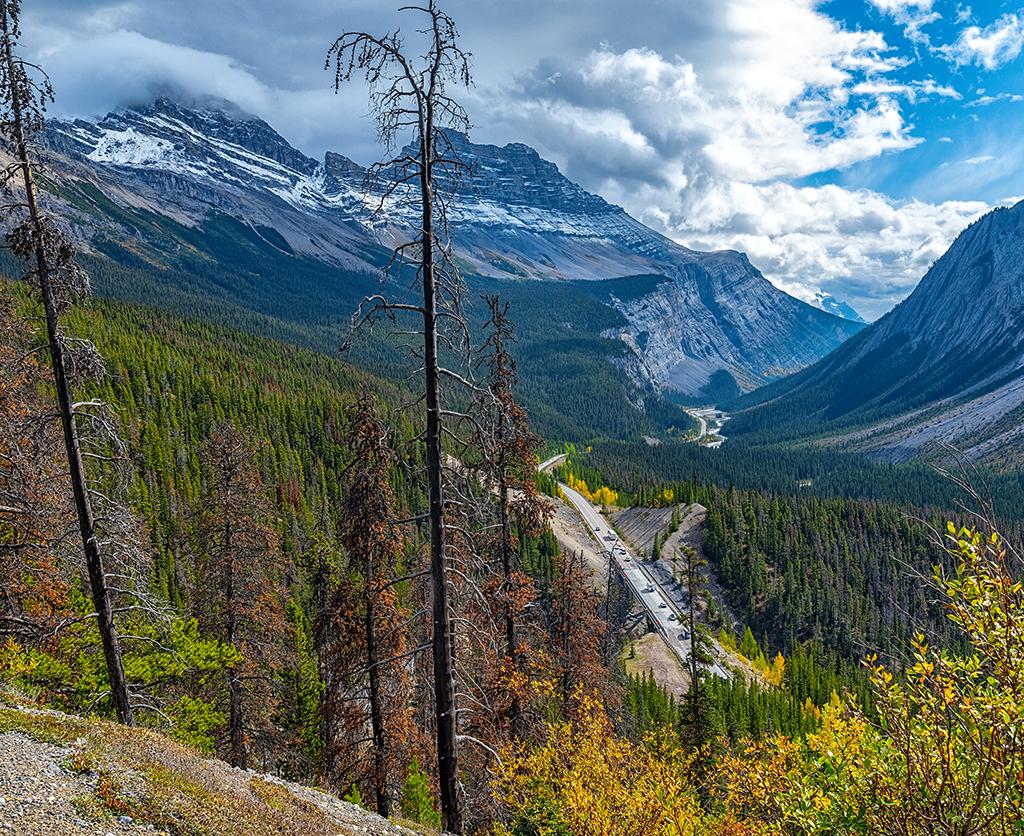
A September view of Cirrus Mountain and the Icefields Parkway, Banff National Park / Rebecca Latson
Photographers must work with whatever they are given. Sometimes, you’ve got a cloudy or otherwise inclement day. Don’t bemoan the day. Clouds add texture, drama, and mood to a composition. If it’s raining, remember to attach your lens hood. It’s great at preventing rain droplets from accumulating on the lens front.
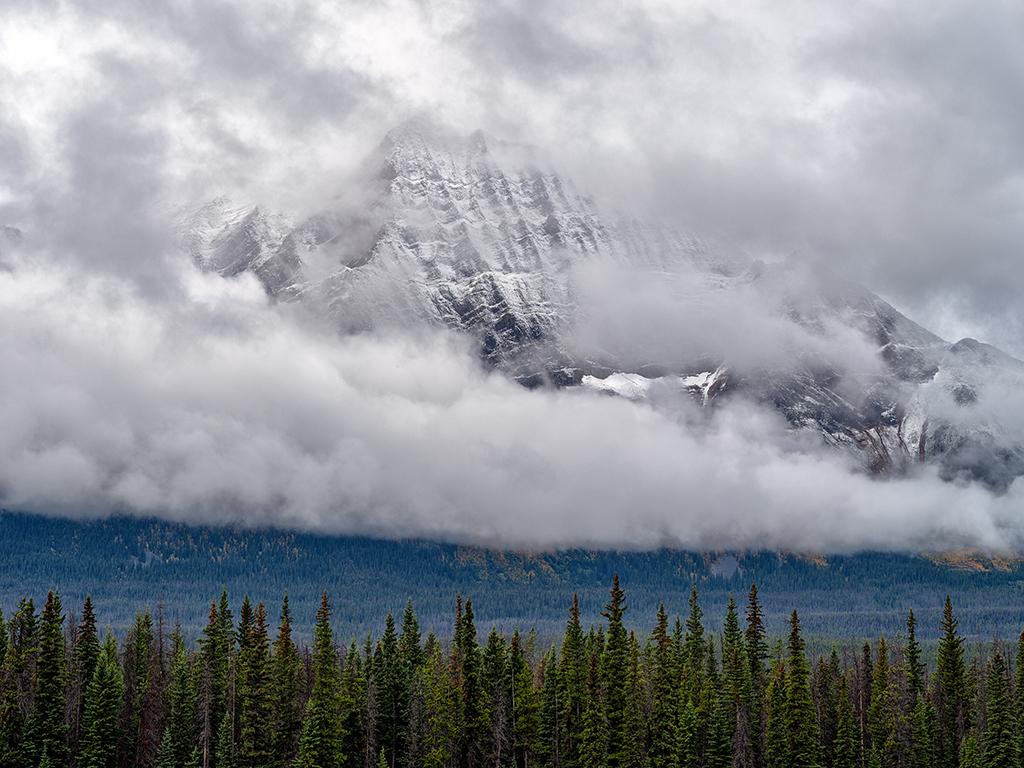
September layers in the Canadian Rockies, Jasper National Park / Rebecca Latson
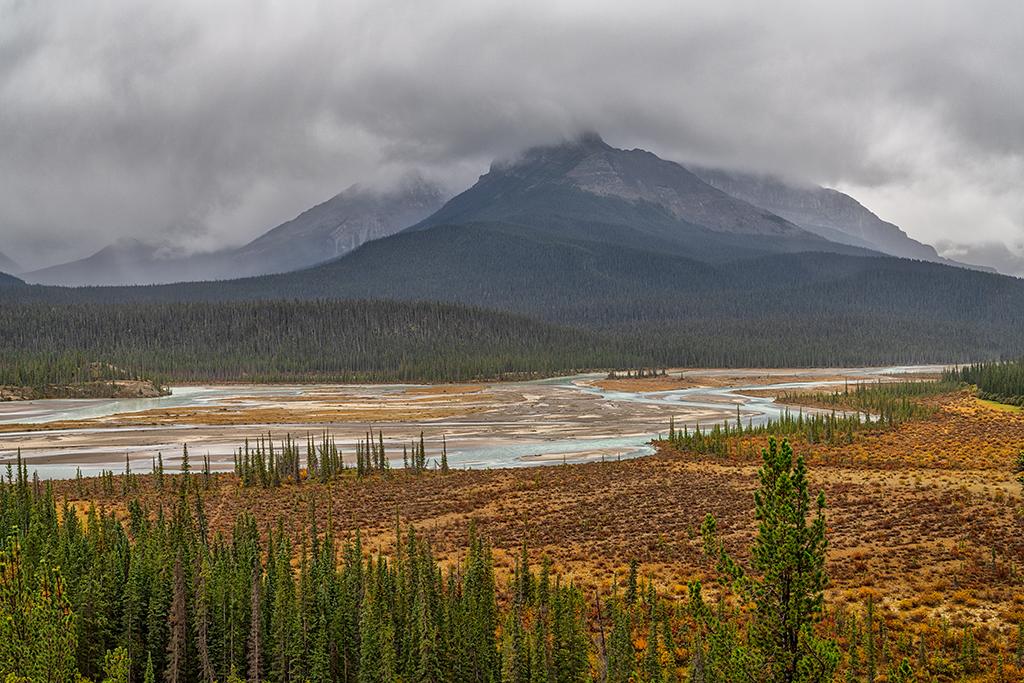
A Howse Pass view of the North Saskatchewan River, Banff National Park / Rebecca Latson
Cloudy days also make for great timelapse videos, if you have the patience to capture one. Nowadays, it’s easy either with your smartphone or in-camera settings, which should have a menu option such as the one for my Sony cameras called “Interval Shoot Func.” All you need is a tripod, since handholding for 20 minutes or longer won’t work successfully.
Sometimes, you might arrive at your destination during the harsh light of midday. You can work with that, you know. In the case of the image below of Maligne Lake in Jasper National Park, the light was bright and harsh and didn’t allow for the true colors of the landscape to show through. So, I opted to just photograph it as it looked, all shadowed blues and bright white highlights.
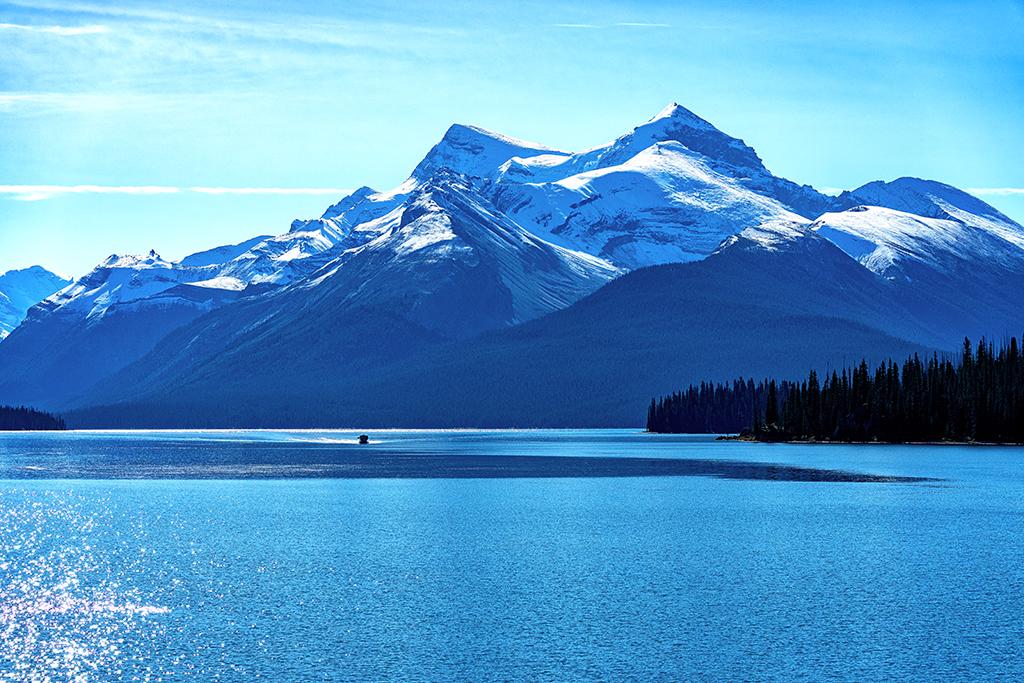
Midday light over Maligne Lake, Jasper National Park / Rebecca Latson
Some locations are difficult to shoot for just the landscape. Sunwapta Falls, for instance, is a beautiful waterfall frothing with the milky turquoise water of the Athabasca River, surrounded by different shades of forest greens and browns. But those people. And the guardrails. Hmmm.
If you choose to use your image for a blog post or other editorial/journalistic purpose, you need to show things as they really are, people and guard railing included. However, if this is going to be a fine art piece highlighting the landscape, then if you really want to remove those extraneous objects and you happen to use Adobe Photoshop for your editing needs, there’s a new tool in the Photoshop arsenal called the “Remove Tool” and it’s like magic at removing an object and replacing it with an almost seamless continuation of the landscape.
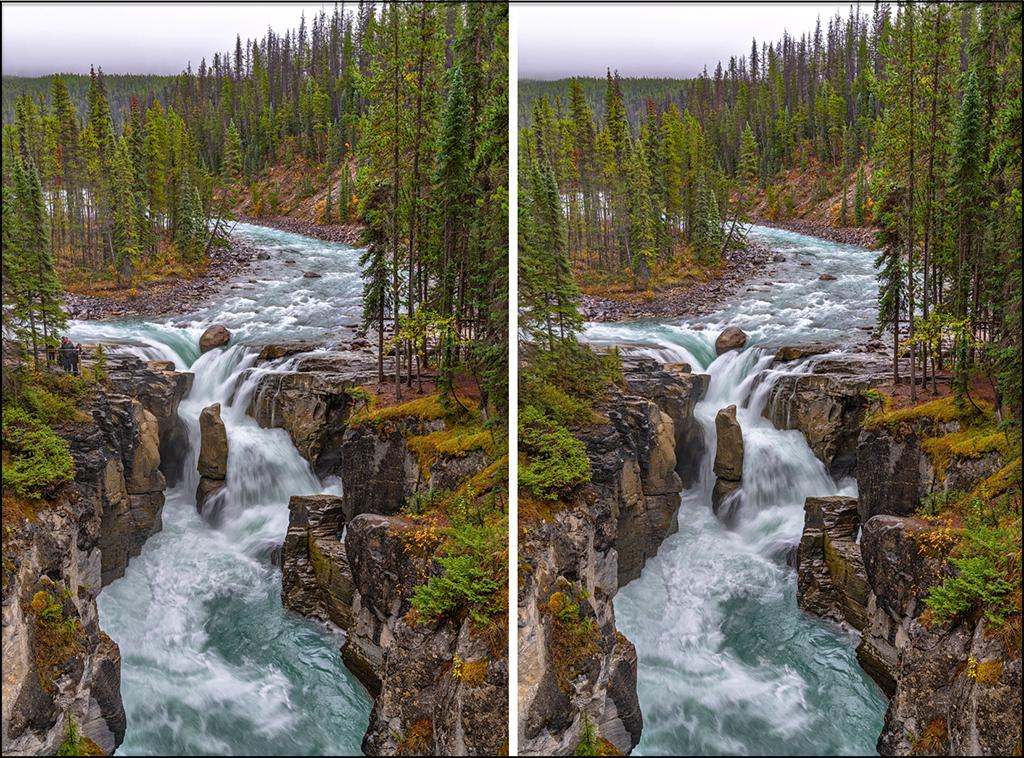
Of course, you can also just capture a different perspective of a popular spot without ever having to use any artful photo software removal option.
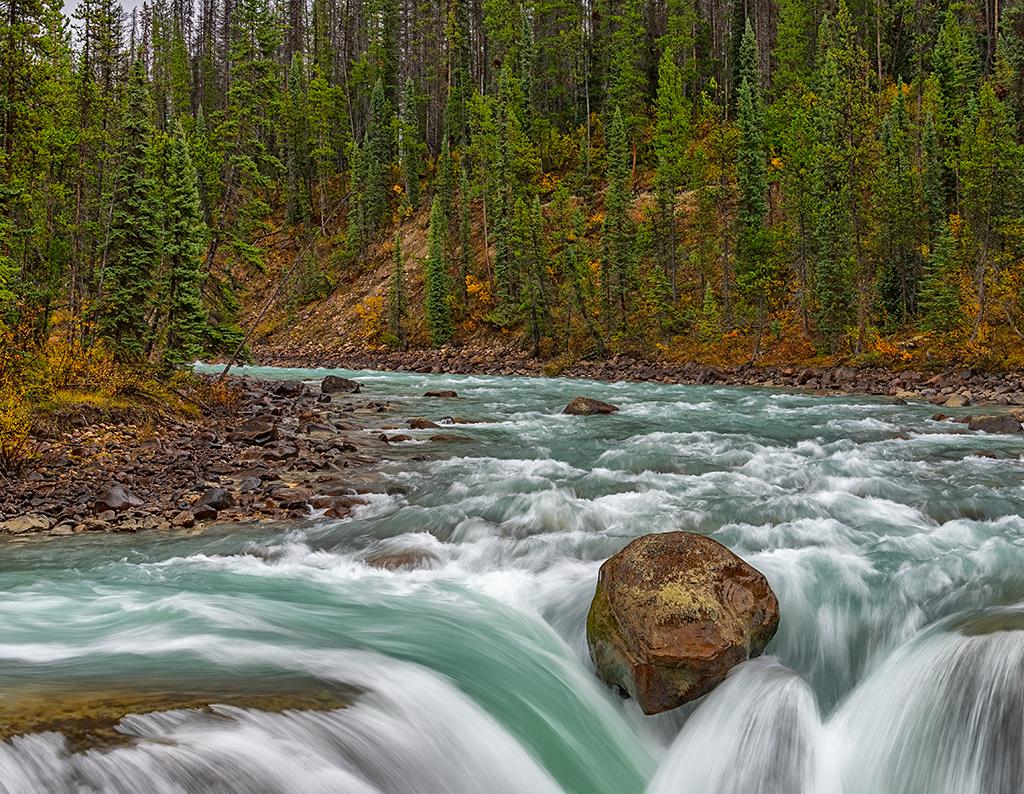
A different perspective of Sunwapta Falls, Jasper National Park / Rebecca Latson
Some images you shoot are nice and sharp in the background, but totally unfocused in the foreground, and vice versa. You can either utilize a wide-angle lens with a focal length between 11mm and 16mm, or you can stack two images together during your photo editing – one focused for the background and one focused for the foreground. Ultra-wide-angle lenses tend to skew the landscape perspective, something you’ll notice when you look through your camera while moving that attached wide-angle lens up and down. “Focus stacking” two or more images eliminates that issue.
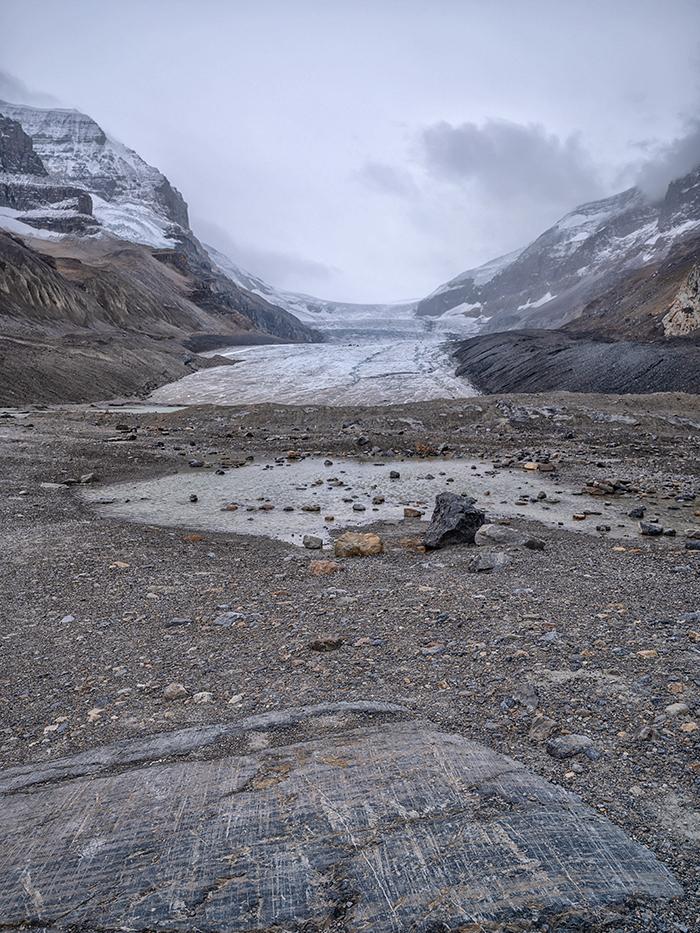
Athabasca Glacier scenery - focus stacked, Jasper National Park / Rebecca Latson
This view of the Athabasca Glacier in the background and smoothed, glacially-striated rock in the foreground, was created combining two images of the same scene, one focused for the foreground and one for the background.
Keep a safe distance from the wildlife and use your telephoto lens.

Bull elk taking a snack break alongside the road, Jasper National Park / Rebecca Latson
Don’t forget to capture a landscape or two with that same telephoto lens.

A telephoto view of the clear, green beauty of Olive Lake, Kootenay National Park / Rebecca Latson
Take advantage of all those view areas and pullouts providing stunning vistas of the Canadian Rockies.
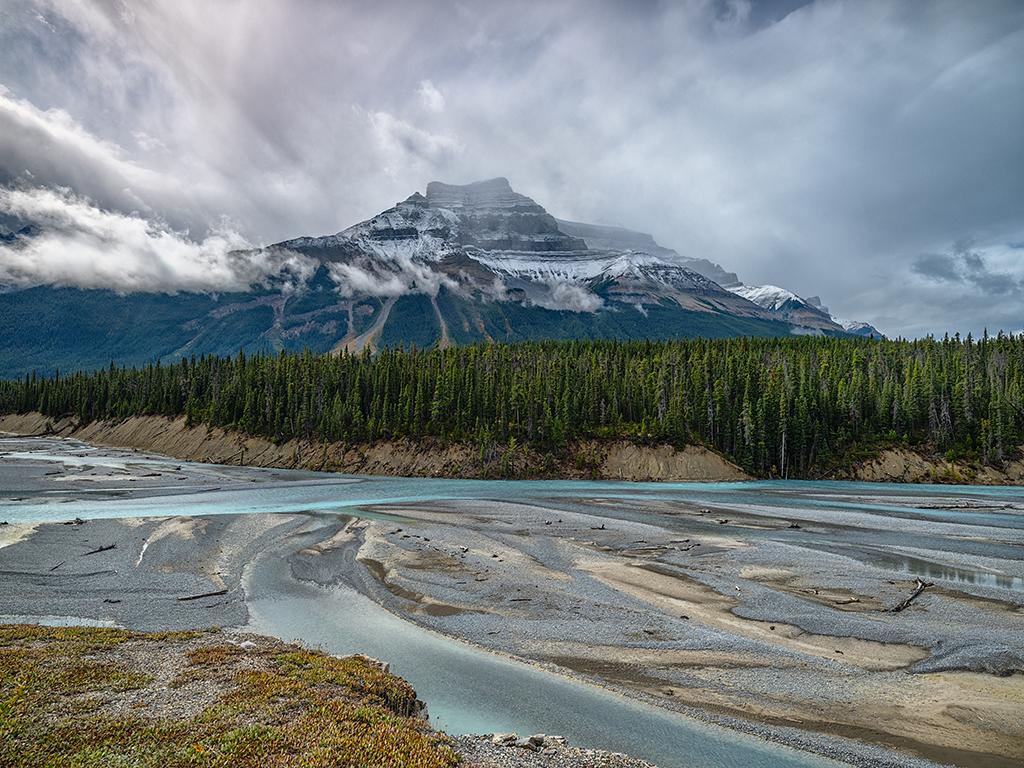
Icefields Parkway landscape, Banff National Park / Rebecca Latson
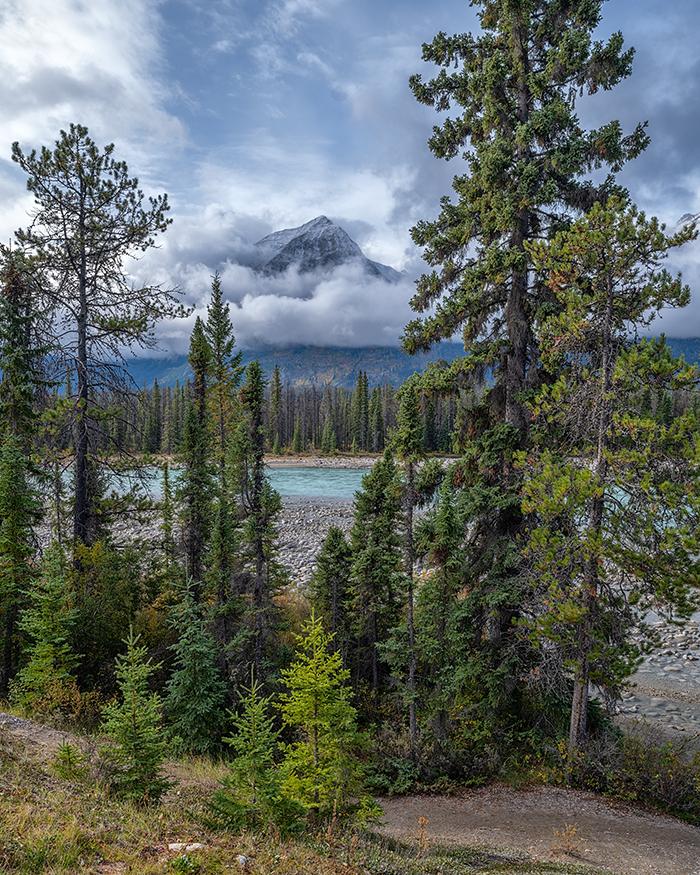
A pullout view along the Athabasca River, Jasper National Park / Rebecca Latson
Include a man-made object in a photo or two. What’s that? Didn’t I just mention something about removing man-made objects? Well, sometimes, the inclusion of a human or human-built item serves as handy scale and reference, so your viewer will know just how large or small something within the landscape really is by associating it with an object familiar to them.
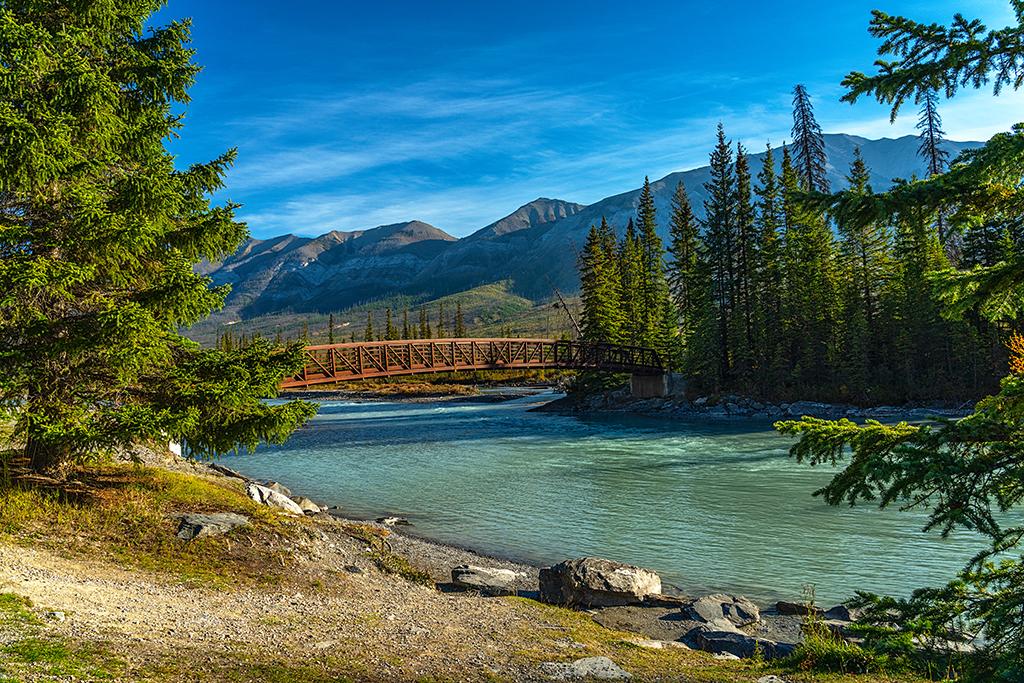
An early-morning view of a bridge over Kootenay River, Kootenay National Park / Rebecca Latson
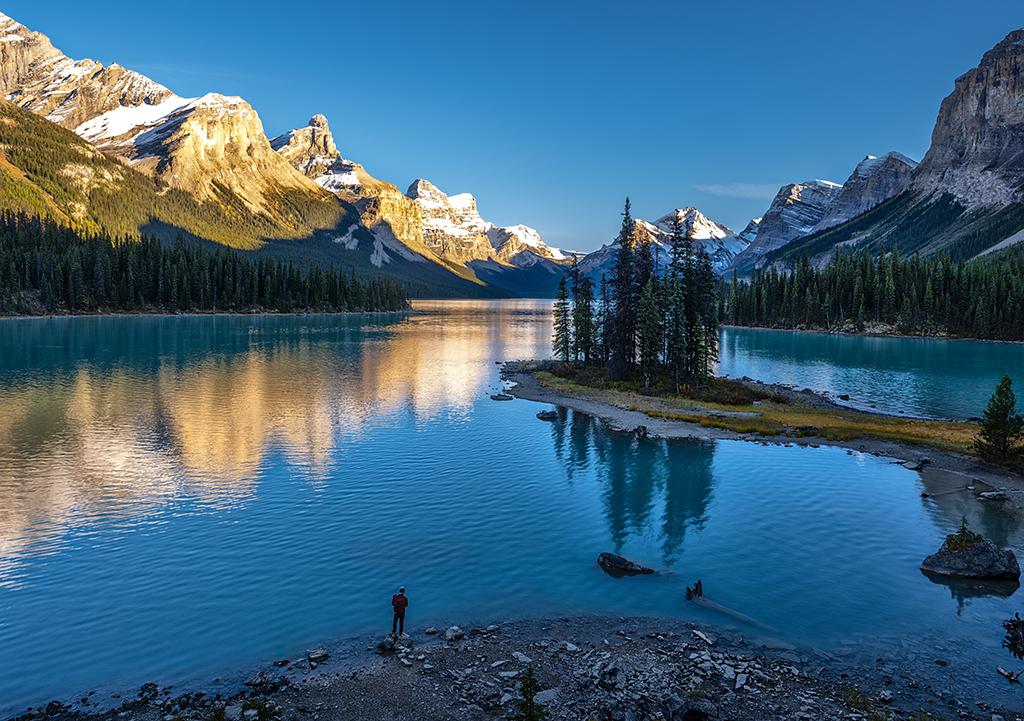
Looking out upon the beauty of Spirit Island and Maligne Lake, Jasper National Park / Rebecca Latson
Even when heading for home, keep your camera out and ready for more shots. You might see something you missed when you first entered the park(s). Rain and cloud cover greeted me the day I drove across the boundary into Jasper National Park, and I couldn’t see the mountains for the clouds. Upon departing the park three days later for my homeward journey, I kept stopping to photograph the beauty of sun-kissed mountains on a crystal-clear morning.
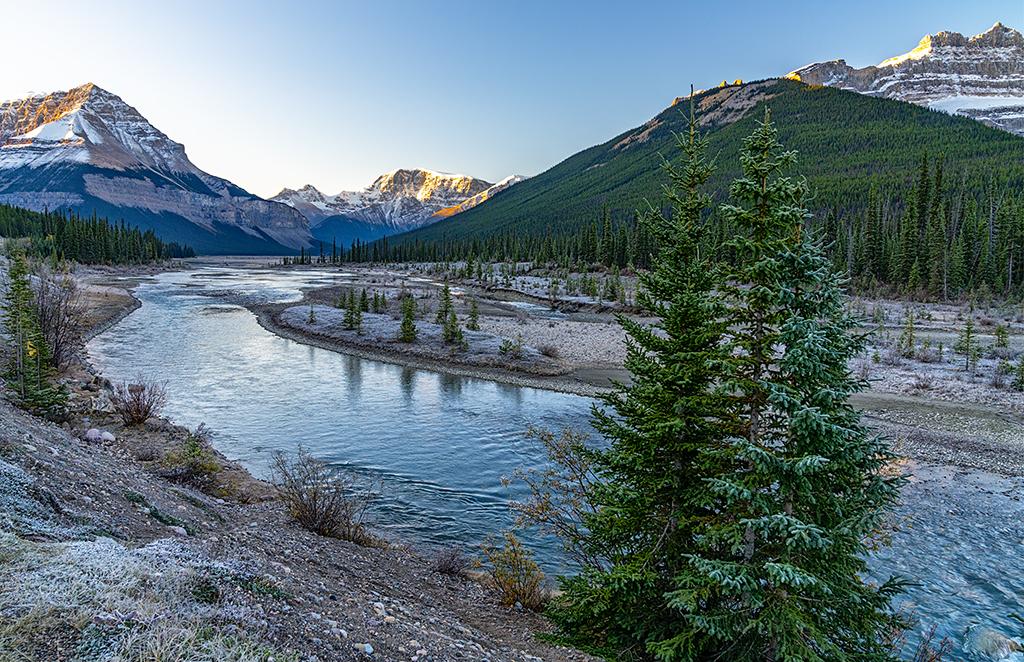
A frosty, clear morning along the Athabasca River, Jasper National Park / Rebecca Latson
Road trips are routes to adventure. Road trips are educational. Road trips are stressful. Road trips when traveling solo can get a little lonely. But road trips offer freedom, amazing sights, and life lessons you won’t soon forget. You’ll find out what you are made of on a road trip while capturing awesome shots of incredible locations.
So, get that camera ready and go hit the road!
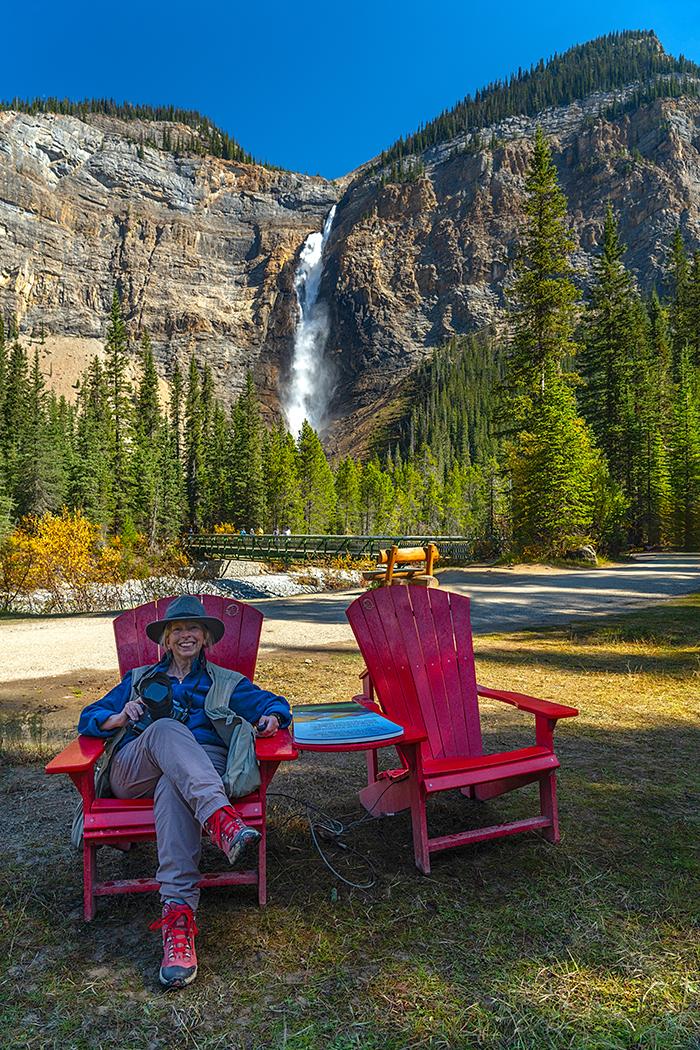
Becky's red chair moment at Takakkaw Falls, Yoho National Park / Rebecca Latson


